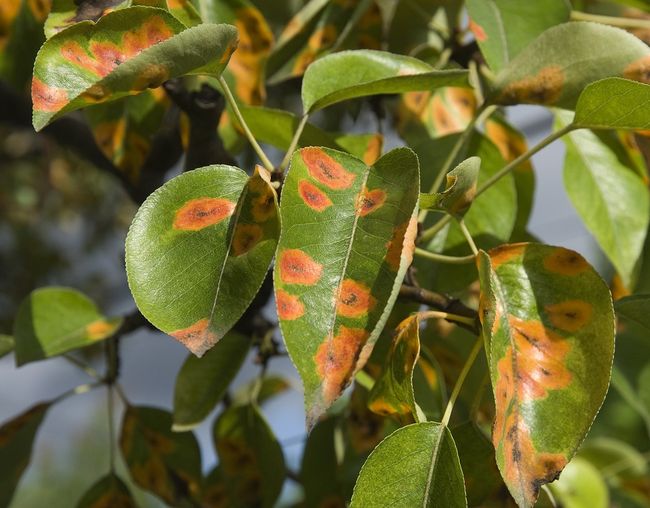 Pear diseases and pests
Pear diseases and pests
The most dangerous disease of pears is pear scab, which differs from apple scab by much more frequent cracking of fruit in spots and infestation of young twigs. Infected twigs are characterized by a rough bark, which is peeling. Mycelium hibernates in these twigs, which produces spores in early spring, infecting young leaves. It is combated by spraying preparations: Dodinox – 0,15% the Kaptan zaw. 50 (0,3%), for the first time when the first leaves appear, the second time during the pink or white bud and the third time at the end of flowering.
Pear white leaf spot caused by the fungus Mycosphaerella sentina is quite common. The first symptoms, which may already be visible in May, they appear as irregular spots, initially brown, gradually graying and finally gray-white. It causes the leaves to fall. Spores hibernate on fallen leaves. Pear scab treatments will also effectively protect against white spot.
Among the pests that attack pear trees, the most common are:
Flower pear tree, whose larvae feed inside the inflorescence buds, destroying in them 4-11 flower buds (one larva destroys only one flower bud). The buds dry up and fall off. In addition, the larvae of this beetle partially bite into the short-shoot, which causes the failure of flower buds on it in the following years. They are then fought, when the beetle begins to feed (End of May – beginning of June), with the spraying of Owadofos, Col.. (0,15%).
The spotted honey causes the same damage to the pear tree, what apple honeydew apple. Both pests are similar. The only difference is in the way of wintering. Pear honeysuckle hibernates as an adult insect. It is fought after flowering with Owadofos Pł. 50 (0,15%), or Decisem 25 EC (0,05%).
In the case of caterpillars devouring the leaves of the tree, they are sprayed during the period of pink or white bud, with the following preparations: Bactospeine Garden (0,5%), Bactospeine WP (0,1%), Gardona 24 EC (0,3%), Basudin 25 EC (0,1%), Insectophos. 50 (0,1 5%), Determined 25 EC (0,05%).